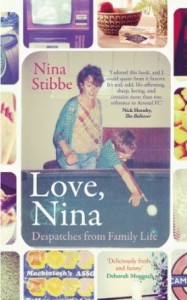Published in the UK by Viking 7 November 2013, in the US by Little, Brown
336pp, hardcover, £12.99
Reviewed by Jessica Mann
Back in the 1960s the young Alan Bennett wrote a mock-soap for the BBC called Streets Ahead about an upwardly mobile couple in north London. These characters inspired Life and Times in NW1, a strip cartoon satirizing the desperately trendy Simon and Joanna Stringalong, which first appeared in The Listener (a now defunct weekly magazine) in August 1967, and from 1969 the Stringalongs also featured in The Times, in a pocket cartoon series by ‘Marc’ – who was in fact the late Mark Boxer (magazine editor and social observer).
The TV series and the cartoons were inspired by real people in a real street, Gloucester Crescent, NW1. The Stringalongs wanted to belong, and one can see why, given what a remarkable collection of talented people had settled in Gloucester Crescent, including Alan Bennett himself, Claire Tomalin, Michael Frayn, Jonathan Miller and Mary-Kay Wilmers who was then (and still is) editor of the London Review of Books.
In 1982 the 20-year old Nina Stibbe moved to London to work as nanny for Mary-Kay’s sons – Will, aged nine, and ten-year-old Sam. It was a nice life at55 Gloucester Crescent, Nina remembers, but she missed her sister Victoria so wrote to her regularly during her early years inLondon. It is those letters that are collected here.
The first thing to say is that they are very funny, not so much because the writer was consciously joking but because of the knowingness that Nina developed in this sophisticated company, and the candid naïveté of the earlier letters, which reminded me of Daisy Ashford’s The Young Visiters. To begin with, she enthused, ‘Being a nanny is great. Not like a job really, just like living in someone else’s life.’ She quickly finds her way round, discovering that Gloucester Crescent is very near to the London Zoo and Madame Tussaud’s. She is firmly told that only people who don’t live inLondon go to places like that.
Conversations are noted in dialogue form and nearly all end with a tart one-liner from Mary-Kay:
Mentioned to MK how much I hate the fishmonger.
MK: How can you not like the fishmonger?
Me: I just don’t.
MK: What’s wrong with him?
Me: He’s tricky to do business with.
MK: Like fish.
Nina stops working as Will and Sam’s nanny, starts a degree course in English literature at Thames Poly and becomes Mary-Kay’s lodger. But there are still delectable little nuggets of experience. When Nina is inspired by The Diary of Adrian Mole Aged 13 3/4 to write her own diary, Alan Bennett says that everyone should do so, ‘But not to bother with issues, i.e. the news, just the day-to-day stuff (that’s what will interest you in years to come).’ And it’s certainly day-to-day stuff that is recorded here. A paving stone which keeps tripping up Mary-Kay. Alan doesn’t like tomatoes in a stew. There are roadworks. New people move to the Crescent and hang lace curtains at the windows. ‘They are the talk of the Crescent. Everyone keeps saying, “What about those curtains!” Claire Tomalin who usually wouldn’t bother mentioning things like that, said, “What bizarre curtains.” Will says they are poncy.’
As Nina tells her sister, ‘Remember what I said. There’s always a lot of autobiography in fiction and fiction in autobiography. It has to be that way otherwise they’d be unreadable (except by the author).’
So is there some fiction in Nina’s autobiographical letters? Or are they full of revealing details in accurate portraits of people who were already well known when Nina lived near them, some of whom are now regarded as National Treasures? Impossible for a reader to judge so it’s best to forget the name-dropping and just enjoy a very entertaining book.

